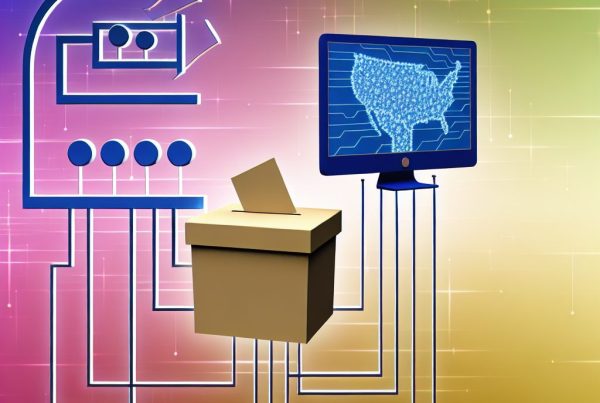Understanding Blockchain Addresses: A Comprehensive Guide
In the world of cryptocurrency, a blockchain address serves as a unique identifier for users and their transactions. Whether you are a seasoned investor or a newcomer to the crypto space, understanding how to read and interpret a blockchain address is crucial for navigating this digital landscape. This guide will delve into the intricacies of blockchain addresses, their structure, and their significance in the cryptocurrency ecosystem.
What is a Blockchain Address?
A blockchain address is a string of alphanumeric characters that represents a destination for cryptocurrency transactions. It functions similarly to an email address, allowing users to send and receive digital assets securely. Each address is linked to a specific wallet, which stores the user’s cryptocurrency holdings.
Types of Blockchain Addresses
There are several types of blockchain addresses, each designed for different cryptocurrencies and use cases. The most common types include:
- Bitcoin Addresses: Bitcoin addresses can be categorized into three main types: P2PKH (Pay-to-Public-Key-Hash), P2SH (Pay-to-Script-Hash), and Bech32 (native SegWit addresses).
- Ethereum Addresses: Ethereum addresses are derived from the public key and are typically 42 characters long, starting with ‘0x’.
- Litecoin Addresses: Litecoin addresses are similar to Bitcoin addresses but start with ‘L’ or ‘M’.
- Ripple Addresses: Ripple addresses begin with ‘r’ and are used for transactions on the Ripple network.
Structure of a Blockchain Address
Understanding the structure of a blockchain address is essential for recognizing its components. Let’s break down a typical Bitcoin address:
- Prefix: The first character(s) indicate the type of address. For example, a Bitcoin address starting with ‘1’ is a P2PKH address, while one starting with ‘3’ is a P2SH address.
- Base58Check Encoding: The main body of the address is encoded using Base58Check, which helps prevent errors in transcription.
- Checksum: The last few characters of the address serve as a checksum, allowing wallets to verify the address’s validity.
How to Read a Blockchain Address
Reading a blockchain address involves recognizing its components and understanding its significance. Here’s a step-by-step guide:
Step 1: Identify the Address Type
Begin by identifying the address type based on its prefix. This will help you understand which cryptocurrency it belongs to and how it can be used.

Step 2: Analyze the Length
Most blockchain addresses have a fixed length. For instance, Bitcoin addresses typically range from 26 to 35 characters, while Ethereum addresses are always 42 characters long. Knowing the expected length can help you spot errors.
Step 3: Check for Validity
Use a blockchain explorer to verify the address. Blockchain explorers allow you to check the balance, transaction history, and other relevant details associated with the address.
Real-World Use Cases of Blockchain Addresses
Blockchain addresses are not just theoretical constructs; they have practical applications across various industries. Here are some notable use cases:
1. Peer-to-Peer Transactions
Blockchain addresses facilitate direct transactions between users without the need for intermediaries. This is particularly useful in remittances, where individuals can send money across borders quickly and at lower fees.
2. Decentralized Finance (DeFi)
In the DeFi space, blockchain addresses are used to interact with smart contracts, allowing users to lend, borrow, and trade assets without relying on traditional financial institutions.
3. Non-Fungible Tokens (NFTs)
NFTs utilize blockchain addresses to represent ownership of unique digital assets. Each NFT has a distinct address that verifies its authenticity and ownership on the blockchain.
Common Misconceptions About Blockchain Addresses
Despite their growing popularity, several misconceptions about blockchain addresses persist:
- Blockchain Addresses are Anonymous: While blockchain addresses do not directly reveal personal information, they are pseudonymous. Transactions can be traced back to addresses, potentially linking them to individuals.
- All Addresses are the Same: Different cryptocurrencies have different address formats and structures. It is crucial to use the correct address type for each transaction.
- Addresses Can Be Changed: Once created, a blockchain address remains static. Users cannot change their addresses, but they can generate new ones for added security.
Security Considerations for Blockchain Addresses
Understanding how to read and manage blockchain addresses is vital for ensuring the security of your cryptocurrency holdings. Here are some best practices:
- Use Hardware Wallets: For long-term storage, consider using hardware wallets that generate and store addresses offline.
- Double-Check Addresses: Always verify the address before sending funds. A small mistake can lead to irreversible loss.
- Enable Two-Factor Authentication: Use two-factor authentication (2FA) on your wallets and exchanges to add an extra layer of security.
Frequently Asked Questions (FAQs)
What happens if I send cryptocurrency to the wrong address?
If you send cryptocurrency to the wrong address, the transaction is irreversible. The funds will be lost unless the recipient is willing to return them.
Can I use the same blockchain address for multiple transactions?
Yes, you can use the same blockchain address for multiple transactions. However, for privacy reasons, it is advisable to generate a new address for each transaction.
Are blockchain addresses safe to share?
While it is generally safe to share your blockchain address for receiving funds, avoid sharing private keys or seed phrases, as these grant access to your wallet.
How can I create a new blockchain address?
You can create a new blockchain address by generating a new wallet using a cryptocurrency wallet application. Most wallets allow you to create multiple addresses.
Conclusion
Understanding how to read a blockchain address is essential for anyone involved in the cryptocurrency industry. By recognizing the structure, types, and security considerations associated with blockchain addresses, you can navigate the digital currency landscape more effectively. Always stay informed and utilize trusted resources like Bitrabo for the latest news and price tracking in the crypto world.
For more insights and updates, follow me on X, Instagram, and Threads.
Disclaimer: This article is for informational purposes only and should not be considered financial advice. Always conduct your own research before making investment decisions.
The Crypto Watchlist of the Week 🔎
Subscribe to receive expert-curated projects with real potential—plus trends, risks, and insights that matter. Get handpicked crypto projects, deep analysis & market updates delivered to you.


